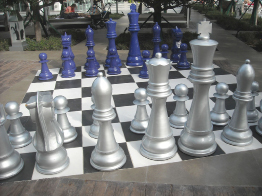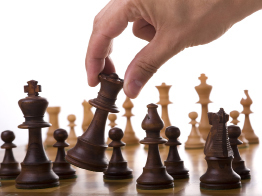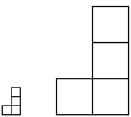Module 6
1. Module 6
1.5. Page 5
Module 6: Triangles and Other Polygons
Lesson Summary

© Baloncici/shutterstock
If you have played foosball or a table-top hockey game, the fields look similar to the real game. If you took the measurements of the length and the width, are they in fact proportional to an actual soccer pitch or hockey rink?
Did You Know?
Foosball was invented in 1922 in Britain. Today foosball is a highly competitive sport. However, unlike ping-pong, foosball is not yet an Olympic sport.
This lesson dealt with similar figures, including how similar figures are constructed and the relationships among the sides and angles of similar figures.
In this lesson you explored the following questions:
-
What techniques can be used to draw similar polygons?
-
What are the relationships among the sides of similar polygons?
-
What are the relationships among the angles of similar polygons?
Check your level of understanding of the materials covered in this lesson by completing “Lesson 1 Traffic Lights.” If you select an amber or red traffic light in the multimedia piece, you will receive information about additional work you can complete to improve your understanding of the topics. Complete the suggested work before you proceed to the Lesson 1 Assignment. If you experience difficulty, contact your teacher before starting the Lesson 1 Assignment.
 Assignment
Assignment
Retrieve the Lesson 1 Assignment Booklet you saved in your course folder at the start of this lesson. Complete the Assignment. Resave your Assignment Booklet in your course folder and submit a copy to your teacher for assessment.
Unit 3 Project

© Infinity2/shutterstock

© Helder Almeida/shutterstock
Have you ever seen one of these massive garden chess games? It is quite obvious that these garden games are enlargements of a typical chess board and are, therefore, similar polygons. Can you see the less obvious similar polygons in these games?
Before you move on to the next lesson, look at the topic you have chosen for your Unit 3 Project. Do you see similar polygons that are obvious in the design of the game or art you chose as your topic? Are there similar polygons that are less obvious with respect to your topic? Take some time to explore your topic in detail. Keep a record of all your ideas and any sketches you make in your course folder for use in your Unit 3 Project presentation. For more information about this step, and later steps of the unit project, refer to the Unit 3 Project.
There are similar polygons in the board shape and in a black or white square; and there are similar polygons in the L-shapes formed when a rook (the horse) moves on the big and small boards.
